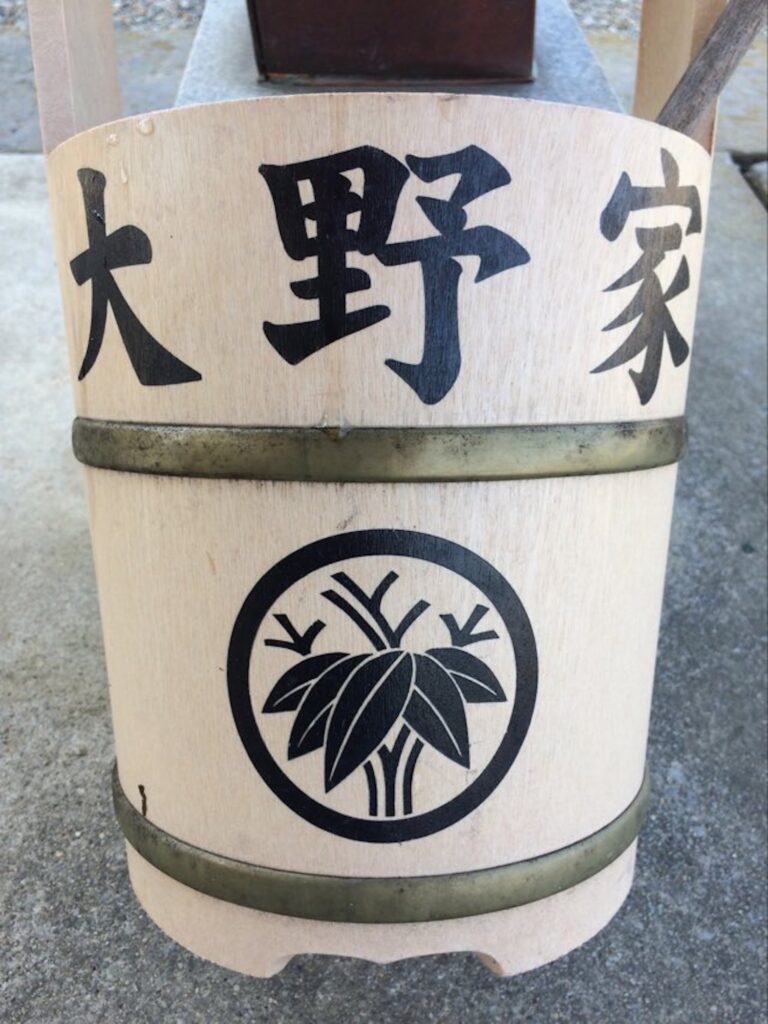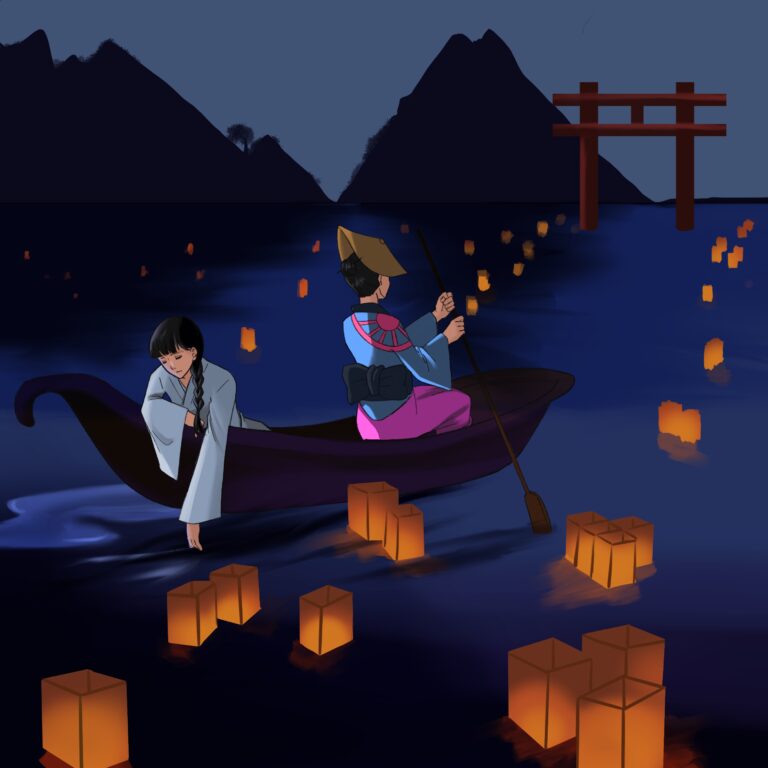A cucumber. An eggplant. Four toothpicks stuck into the body of each.
Sitting atop a shrine next to the ashes of grandma and grandpa, mounts of produce offer rides to and from the afterlife. This is the strongest memory my dad has of the Japanese Buddhist festival, Obon.
Obon is a time when Japanese families come together to welcome their ancestors’ spirits back from the afterlife. Depending on the region, Obon festivities start anytime between mid-July and early-September. The most widely celebrated time is mid-August, taking place in 2021 from August 13–16.
Four days is a short period of time to reconnect with the spirits of the dead, especially since they travel so slowly. Because of this, Japanese families gather produce and toothpicks to create shoryo-uma, spirit horses and spirit cows for their ancestors to travel on. The cucumber speeds up traveling as it represents the quick-footed spirit steed that brings the dead back from the afterlife. The eggplant is the spirit horse’s slower counterpart, the spirit cow. Although Japanese families are eager for the return of their ancestral spirits, they’re not so quick to let them go. The cow slowly carries the dead back to the afterlife, providing families with a prolonged goodbye before next year’s meet.
Shoryo-uma — although an important part of Obon — is just one element of this Japanese holiday. Chochin, or paper lanterns, hang all around the homes and temples of Japanese families, acting as signs to guide spirits to their loved ones. There is even the traditional Bon Odori dance that ensures the spirits are entertained throughout their welcome home. More importantly, Obon brings Japanese families together to share food, memories and conversation across generations of both the living and the dead.
Despite its importance, my dad doesn’t have any memory of celebrating Obon. As his Asian-American daughter that never learned Japanese, this lack of Japanese knowledge is simply another unsurprising dead-end for my attempted dive into my heritage — but I can’t totally blame him.
Coming from hard-working parents that rarely had time to be at home, let alone conduct regular rituals, my dad didn’t get much in the area of tradition. Becoming a Japanese immigrant at age 23 certainly didn’t aid him in that area either. Lucky for my growing Japanese heritage itch, he recently did the unexpected: he married a native Japanese woman, Midori.
Midori’s memory of Obon serves her better. A steady rhythm resounds from mokugyo, wooden fish-shaped drums. The warm smell of incense mixes in with the ocean breeze. Deep umami flavors burst from her grandfather’s signature saba sushi. Like many Japanese families during Obon, Midori’s family went on vacation and traveled to where most of her ancestors were buried. This was her grandparents’ seaside home in Fukui Prefecture. Her fondest memory is of the volleyball games and post-dinner walks she enjoyed with her family during the hot summer nights of Obon.
Midori also recalls a common Japanese ritual that is not only practiced during Obon, but on a regular basis: cleaning the tombstones of the dead, a Japanese tradition my dad didn’t deprive me of.
With my dad as my own personal tour guide, I grew up traveling to Japan every few years to visit family. Body language went a long way when communicating with my non-English-speaking grandparents, especially with my sarcastic candy-hoarding obaasan (grandma). No trip to grandma’s house was left without the traditional practice of going to our family temple to clean our ancestors’ tombstones.

I didn’t have to know any Japanese for this one. I’d walk with my dad over to the Koushou-in temple well and look for the oke (bucket) and hishaku (ladle) labeled with our family crest. We ladled the water from our oke over the tombstones housing my ancestors’ ashes, scrubbing away any dust or debris before wiping it dry. The two candles in front of each grave were then lit, along with a burning incense that lightly breathed beside white and yellow chrysanthemums. Lastly, ohagi: mochi rice wrapped in sweet beans was placed closest to each chamber of ashes, a sweet treat for our ancestors before I awkwardly followed my dad in prayer.
Knowing that cleaning tombstones is done during Obon makes me feel more connected to this festival that I only recently heard of. Also knowing that Midori swaps out the ohagi for her dad’s favorite ice cold beer whenever she visits his tombstone helps me to embrace my family’s own unique approach to tradition.
Because of the pandemic, this year’s Obon festivities will likely be kept to a minimum. However, families will still be able to gather at the butsudan (shrine) in their homes, like the one that lives in my dad’s memory, filled with shoryo-uma made by my obaasan — a sentimental memory now that she passed last November, three years after my ojiisan.

It has been five years since I’ve visited Japan, and I won’t be able to visit my grandparents’ tombstones this Obon. I also won’t be attending the local Obon festivities — but it’s for a good reason. I’ll be spending the weekend with my family as they help move me to college where I will be studying Japanese and English literature.
Now that I’ll be learning more about Japan and the Japanese language, I’ll have more specific questions to ask my dad in hopes of stirring buried memories. It’s a good starting point that has already brought my family closer through conversation, and Midori will be around to fill any holes in my dad’s Japanese memories.
Learning Japanese will be tough, but the motivation in my heart is full. By Obon 2022, I’ll be able to say a little prayer for my grandma in Japanese as my dad and I clean her tombstone and leave her sweet candies. In the meantime, a cucumber with toothpicks will have to suffice. And I may even have to put a few wobbly toothpicks in an eggplant to make up for lost time.

